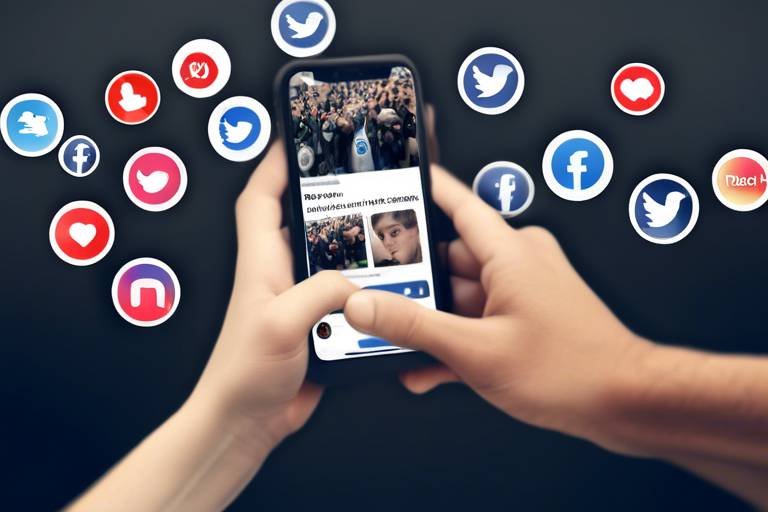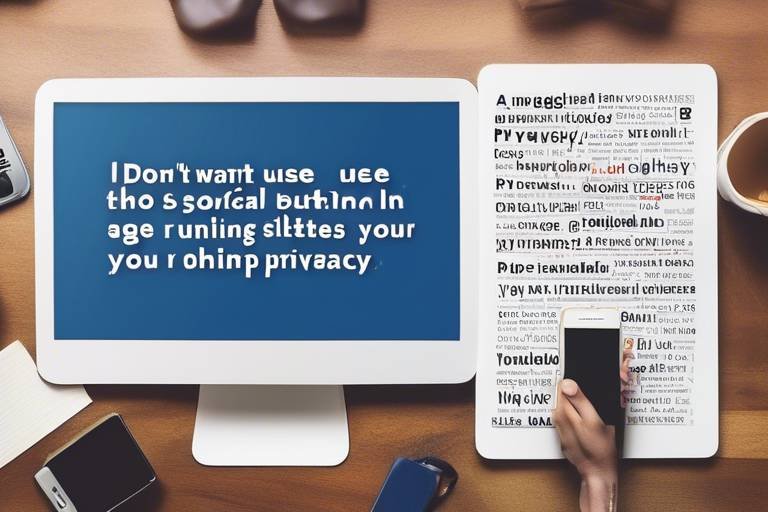Are Political Bots Manipulating Your Social Media Feed?
In today's digital age, the question isn't whether your social media feed is influenced, but rather by whom and how. Political bots have emerged as powerful players in the online arena, and their impact on public discourse is both profound and concerning. As we scroll through our feeds, we may unknowingly be interacting with automated accounts designed to shape our perceptions and sway our opinions. This article dives deep into the world of political bots, unveiling their roles, techniques, and the implications of their presence for our democracy.
The surge of political bots can be attributed to the rapid advancement of technology and the crucial role social media plays in modern communication. During election seasons, these bots have proliferated, leveraging algorithms to engage users and manipulate discussions. But what exactly is driving this rise? As political polarization increases, so does the need for parties and interest groups to control the narrative. Bots serve as the perfect tool for this purpose, disseminating tailored content to target audiences, often without users even realizing it. The result? A distorted view of reality where misinformation can thrive.
Understanding how political bots operate is key to grasping their influence. These automated entities utilize sophisticated algorithms to mimic human behavior, making them appear credible and trustworthy. They can create and share content at an astonishing scale, flooding timelines with information that aligns with specific agendas. By analyzing user interactions and preferences, bots can tailor their messages to resonate with different demographics, ensuring maximum engagement. This strategic manipulation raises questions about the authenticity of the information we encounter online.
Political bots come in various forms, each designed to fulfill specific roles within the digital landscape. Here are some common types:
- Automated Accounts: These bots generate content and interact with users, often posing as real individuals. They can create the illusion of widespread support or dissent on particular issues.
- Fake News Amplifiers: These bots specialize in promoting misleading or false information, contributing to the spread of rumors and conspiracy theories.
- Engagement Bots: Their primary goal is to increase likes, shares, and comments on specific posts, artificially inflating the visibility of certain narratives.
Automated accounts, or bots, are designed to produce and share content at an impressive rate. They can flood social media platforms with posts that align with particular political narratives, making it challenging for users to discern genuine interactions from automated ones. This phenomenon can lead to a skewed perception of public opinion, as users may mistakenly believe a topic is more popular than it truly is.
Among the most insidious types of political bots are those that specialize in amplifying fake news stories. These bots play a critical role in the dissemination of misinformation, often sharing sensationalized or completely fabricated content to provoke emotional responses. The consequences are dire: they can shape public opinion, influence voter behavior, and ultimately undermine the integrity of democratic processes.
To navigate the complex landscape of social media effectively, it’s crucial for users to recognize the signs of political bot activity. Here are some tips to help:
- Look for irregular posting patterns, such as high volumes of posts in a short time.
- Check the account's follower-to-following ratio; bots often have many followers but follow few accounts.
- Observe the type of content shared; bots may frequently share links without original commentary.
The influence of political bots extends far beyond mere social media interactions; they have the power to shape public opinion on a massive scale. By manipulating discussions and amplifying specific narratives, these bots can distort reality, leaving users with a skewed understanding of current events. This manipulation can create echo chambers, where individuals are only exposed to viewpoints that reinforce their beliefs, further polarizing society.
To truly grasp the extent of bot influence, we can look at specific case studies from recent elections. For instance, during the 2016 U.S. presidential election, it was estimated that over 20% of tweets about the election were generated by bots. These automated accounts played a crucial role in shaping the narrative, often promoting divisive content that heightened tensions among voters.
The long-term effects of political bot manipulation can be devastating. As trust in social media platforms wanes, users may become increasingly skeptical of the information they encounter. This erosion of trust can have dire implications for democracy, as informed citizenry is essential for a functioning society. If left unchecked, the influence of political bots could lead to a disengaged electorate, where individuals feel disillusioned and disconnected from the political process.
Efforts to combat the influence of political bots are gaining momentum. Social media platforms are implementing various strategies and tools to identify and reduce bot activity. Users can also play a role by educating themselves about the nature of these bots and advocating for transparency in online discourse. By fostering a culture of critical thinking and media literacy, we can collectively work towards enhancing the integrity of information online.
Q: How can I tell if an account is a bot?
A: Look for signs such as unusual posting frequency, lack of personal interaction, and a suspicious follower-to-following ratio.
Q: What can I do if I encounter a political bot?
A: You can report the account to the social media platform and share your findings with others to raise awareness.
Q: Are all bots harmful?
A: Not all bots are malicious; some are designed for harmless purposes, like sharing news updates or engaging in customer service. However, political bots can often have negative implications.

The Rise of Political Bots
In recent years, political bots have surged in prevalence across social media platforms, transforming the way we engage with information and shaping public discourse. With the rapid advancement of technology and the increasing importance of online discussions during elections, these automated accounts have become a powerful tool for influencing voter behavior and public opinion. But what exactly drives this rise? It’s a combination of factors, including the accessibility of sophisticated algorithms, the sheer volume of content being produced online, and the growing significance of social media as a battleground for political narratives.
As we dive deeper into this phenomenon, it’s essential to understand that political bots are not just random accounts. They are often carefully engineered to mimic human behavior, making them difficult to identify at first glance. This sophistication allows them to infiltrate conversations, spread misinformation, and amplify specific messages that align with particular political agendas. Imagine a puppet master pulling strings behind the scenes, orchestrating a performance that captivates the audience—this is how political bots operate within our social media feeds.
The implications of this rise are profound. Political bots can sway public opinion by creating an illusion of consensus around certain issues or candidates. For instance, when a particular narrative is repeated across multiple accounts, it can give the impression that it is widely accepted, even if that is far from the truth. This manipulation can distort reality and lead to a fragmented public discourse where misinformation thrives. As users scroll through their feeds, they may unknowingly engage with content that has been strategically planted by these bots, further entrenching biases and misconceptions.
Moreover, the rise of political bots coincides with a decline in trust in traditional media sources. As people increasingly turn to social media for news, they become more vulnerable to the influence of these automated accounts. The challenge lies in discerning what is real and what is artificially constructed. To illustrate this point, consider the following statistics:
| Year | Percentage of Users Who Trust Social Media for News |
|---|---|
| 2016 | 62% |
| 2018 | 50% |
| 2020 | 40% |
The data reveals a troubling trend: as trust in social media diminishes, the potential for political bots to manipulate public perception grows. It’s a vicious cycle that can have long-lasting effects on democracy. As these bots continue to evolve and adapt, they pose a significant challenge for users trying to navigate the complexities of online information.
In conclusion, the rise of political bots is a multifaceted issue driven by technological advancements and the changing landscape of information dissemination. As we become more aware of their presence and influence, it is crucial for us, as users, to remain vigilant and informed. After all, in the age of information overload, our ability to discern fact from fiction is more important than ever.

How Bots Operate
Understanding how political bots operate is crucial in today’s digital landscape. These automated accounts are not just random strings of code; they are sophisticated tools designed to manipulate public opinion and influence discourse. At their core, bots utilize algorithms and strategies that allow them to disseminate information rapidly across social media platforms. Imagine them as digital puppeteers, pulling the strings of public sentiment, often without users realizing it.
One of the primary ways bots operate is through the use of social media algorithms. These algorithms are designed to maximize engagement, meaning that content that generates likes, shares, and comments gets prioritized in users' feeds. Political bots exploit this by creating sensational or polarizing content that is likely to provoke strong reactions. This leads to a cycle where the more outrageous the content, the more visibility it gains, further amplifying its reach.
Moreover, bots often employ a variety of strategies to enhance their effectiveness. For instance, they can:
- Imitate Human Behavior: Bots are programmed to mimic human interactions, such as liking posts, retweeting, and commenting. This behavior makes them appear more legitimate and can trick users into believing they are engaging with real people.
- Target Specific Audiences: Using data analytics, bots can identify and target specific demographics, tailoring their messages to resonate with particular groups. This targeted approach increases the likelihood of influencing opinions and behaviors.
- Use Hashtags and Trends: By leveraging trending hashtags, bots can insert themselves into ongoing conversations, making their content more discoverable and relevant to current events.
Furthermore, the technology behind these bots is continually evolving. Some bots are now equipped with machine learning capabilities, allowing them to adapt their strategies based on the reactions they receive. This means they can learn what types of content generate the most engagement and adjust their messaging accordingly. It's like having a chameleon that changes its colors to blend in with its environment, making it even more challenging for users to spot them.
As we delve deeper into the world of political bots, it becomes evident that their operations are not only about spreading information but also about shaping narratives. The implications of this manipulation are profound, as they can distort reality and create echo chambers where users are only exposed to information that reinforces their existing beliefs. This is where the danger lies—when the line between genuine discourse and orchestrated propaganda blurs, it can lead to a fractured public sphere.
In summary, understanding how bots operate is essential for anyone navigating the complex world of social media. By recognizing their tactics and strategies, users can become more discerning consumers of information. The digital landscape may be rife with manipulation, but knowledge is a powerful tool that can help individuals reclaim their feeds from the clutches of political bots.
Q: What are political bots?
A: Political bots are automated accounts on social media that are programmed to disseminate information, influence public opinion, and manipulate discourse, often during election periods.
Q: How can I identify a political bot?
A: Look for accounts that have little to no personal information, post excessively, or share content that seems overly sensational or biased. Tools like bot detection software can also help.
Q: What impact do political bots have on democracy?
A: Political bots can distort public perception, spread misinformation, and create divisions within society, ultimately undermining trust in democratic processes and institutions.
Q: What can be done to combat the influence of political bots?
A: Social media platforms are developing tools to identify and mitigate bot activity, while users can educate themselves and others about recognizing bot behavior and promoting digital literacy.

Types of Political Bots
When it comes to political bots, not all are created equal. They come in various forms, each designed with specific objectives that can significantly impact public discourse. Understanding these types is essential for users who want to navigate the murky waters of social media effectively. So, what are these bots, and how do they operate?
First up, we have the Automated Accounts. These bots are programmed to post content at scale, often mimicking human behavior to create an illusion of authenticity. They can churn out tweets, retweets, and comments faster than any human can, making them powerful players in shaping political narratives. Imagine a factory producing thousands of identical products; that's how automated accounts flood social media with specific messages. Their speed and volume can drown out genuine voices, making it hard for users to discern real engagement from artificial noise.
Next, we encounter the notorious Fake News Amplifiers. These bots are like the bullhorns of misinformation, specializing in promoting sensationalized or entirely fabricated news stories. They thrive on outrage and controversy, spreading false narratives that can sway public opinion and create division. Think of them as the gossipers of the digital age, amplifying rumors and half-truths until they become accepted as fact. Their impact can be staggering, especially during election cycles when misinformation can alter voter perceptions and decisions.
Additionally, we have the Engagement Bots. These bots are designed to increase interaction on posts, often by liking, sharing, or commenting. Their goal is to give the impression that a particular viewpoint has widespread support, even if that support is artificially manufactured. Imagine walking into a room where everyone is applauding, but you later find out that most of them were paid to be there. That’s the kind of illusion engagement bots create, making it challenging for users to gauge the true popularity of a narrative.
Lastly, there are the Sentiment Manipulators. These bots analyze user reactions and adjust their strategies accordingly to influence emotions and opinions. They can detect trends and sentiments in real-time, allowing them to tailor their messages to resonate with users' feelings. It’s like having a chameleon that changes its colors based on the environment, making it incredibly difficult for users to spot them amidst genuine discussions.
In summary, political bots can be categorized into several types based on their functions and strategies. Each type plays a unique role in the digital landscape, contributing to the complexity of online interactions. Understanding these distinctions is crucial for anyone looking to engage with political content on social media. The next time you scroll through your feed, consider the possibility that you might be interacting with a bot rather than a real person.

Automated Accounts
Automated accounts, commonly referred to as bots, have emerged as a formidable force in the realm of social media. These digital entities can generate and share content at an astonishing scale, often blurring the lines between genuine human interaction and algorithm-driven communication. Imagine walking into a crowded room where every voice sounds similar, yet you can't quite tell who is speaking from the heart and who is merely repeating programmed lines. This scenario mirrors the experience of navigating social media platforms today, where automated accounts can significantly shape political narratives and public discourse.
One of the primary advantages of these automated accounts is their ability to operate around the clock, tirelessly posting and engaging without the need for breaks or sleep. They can churn out thousands of tweets or posts within minutes, creating an illusion of widespread support or dissent on various issues. For instance, during election cycles, these bots can flood social media with messages that either endorse a candidate or criticize an opponent, making it seem as though a significant portion of the population holds a particular view. The sheer volume of content generated can overwhelm genuine discussions, leading users to believe that certain opinions are more prevalent than they truly are.
However, the presence of automated accounts poses significant challenges for users seeking authentic information. With the rise of sophisticated algorithms, it has become increasingly difficult to differentiate between real users and bots. Many users may unwittingly engage with these automated accounts, believing they are interacting with fellow citizens who share their interests and concerns. This interaction can inadvertently amplify the bots' influence, allowing them to perpetuate misinformation and skew public perception.
To illustrate the impact of automated accounts, consider the following characteristics that distinguish them from genuine users:
| Characteristic | Automated Accounts | Genuine Users |
|---|---|---|
| Activity Level | High volume, constant posting | Variable, often less frequent |
| Engagement | Repetitive interactions, often generic | Personalized, context-driven responses |
| Profile Details | Often minimal or generic information | Detailed profiles with personal information |
| Content Quality | May spread misinformation or propaganda | Varied quality, often based on personal experience |
In conclusion, while automated accounts can serve specific functions—such as spreading information quickly or engaging users—they also present significant risks. Their ability to create a facade of popularity or consensus can distort reality, leading to misguided perceptions among users. As we continue to navigate the complexities of social media, it is essential to remain vigilant and develop strategies to identify and mitigate the influence of these automated entities.
Frequently Asked Questions
- What are automated accounts? Automated accounts, or bots, are software programs designed to perform specific tasks on social media platforms, including posting content and engaging with users.
- How can I identify a bot? Look for signs such as high activity levels, generic responses, and minimal profile details that may indicate an account is automated.
- What impact do bots have on public opinion? Bots can manipulate public opinion by creating the illusion of widespread support for certain viewpoints, thereby distorting reality.
- What can be done to combat bot influence? Users can enhance their media literacy, report suspicious accounts, and use tools designed to detect bot activity on social media platforms.

Fake News Amplifiers
In the vast ocean of social media, where information flows like a raging river, serve as both the currents and the whirlpools, leading users astray. These bots are not just random accounts; they are meticulously designed to spread misinformation at an alarming rate. Imagine a megaphone in a crowded marketplace, amplifying whispers of falsehoods until they become the loudest voices in the room. That's precisely how these bots operate, turning dubious claims into trending topics.
Fake news amplifiers primarily focus on promoting sensational stories that capture attention, regardless of their truthfulness. They thrive on controversy, often targeting emotionally charged subjects such as politics, health, or social issues. By doing so, they create a ripple effect, where one misleading post can lead to hundreds of shares and retweets. This amplification is not just about volume; it's about shaping narratives and influencing public perception.
These bots utilize sophisticated algorithms to identify trending topics and keywords, allowing them to insert themselves into ongoing conversations. For instance, during an election cycle, a bot may latch onto a controversial statement made by a candidate, generating a flurry of posts that either support or attack that statement, depending on its programmed agenda. This manipulation creates an illusion of widespread opinion, skewing the reality of what people actually think.
Moreover, the impact of these amplifiers extends beyond just spreading misinformation. They can also create echo chambers, where users are bombarded with similar viewpoints, reinforcing their beliefs without exposure to opposing perspectives. This phenomenon can lead to polarization, where individuals become more entrenched in their views, making constructive dialogue increasingly difficult.
To illustrate the power of fake news amplifiers, consider the following table that summarizes their key characteristics and impacts:
| Characteristic | Impact |
|---|---|
| High Engagement | Increases visibility of false narratives |
| Emotionally Charged Content | Encourages sharing and discussion |
| Algorithmic Targeting | Reaches specific demographic groups effectively |
| Creation of Echo Chambers | Polarizes public opinion |
As users, it’s crucial to remain vigilant. Understanding the mechanics of fake news amplifiers can empower you to question the narratives presented on your feed. Are you sharing a post because it resonates with your beliefs, or because it’s been amplified to the point of seeming credible? By asking these questions, you can help combat the spread of misinformation and contribute to a healthier online discourse.
In conclusion, while social media has the potential to connect and inform, it also harbors dangers in the form of fake news amplifiers. These bots are not just a nuisance; they pose a significant threat to the integrity of information and, ultimately, to the democratic process itself. As we navigate this digital landscape, let’s commit to being discerning consumers of information, challenging the narratives that seek to manipulate us.
- What are political bots? Political bots are automated accounts on social media designed to disseminate information, often with a political agenda.
- How can I identify fake news amplifiers? Look for accounts that frequently share sensational or misleading content, have few followers, or lack genuine engagement.
- What can I do to combat misinformation? Verify sources before sharing, engage with diverse viewpoints, and report suspicious accounts.

Identifying Political Bots
In the vast ocean of social media, where information flows like a raging river, it's crucial to know how to spot the lurking political bots that can skew your perception of reality. These digital entities can manipulate discussions, spread misinformation, and create an illusion of consensus. But how can you differentiate between a real person and a bot masquerading as one? The key lies in understanding their behavior and characteristics.
First off, look for patterns. Political bots often exhibit repetitive behavior. If you notice an account posting the same message or retweeting similar content incessantly, it’s a red flag. Bots tend to operate on a schedule, flooding feeds during peak hours with pre-programmed messages. Moreover, they often have a high volume of posts but a low level of engagement, meaning they might have thousands of followers but very few likes or comments on their posts.
Another telltale sign is the account's profile. Many bots have incomplete profiles, lacking a profile picture or bio. If an account seems to have been created recently and has no personal history or interactions that suggest a genuine user, it could very well be a bot. In contrast, authentic users typically have a diverse range of posts and interactions, reflecting their interests and personality.
Additionally, you can utilize various tools designed to identify bot activity. For instance, websites like Botometer can analyze Twitter accounts and provide a score indicating the likelihood of an account being a bot. These tools examine factors such as tweet frequency, the nature of interactions, and the account's follower-to-following ratio.
Here are some characteristics to keep in mind when identifying potential political bots:
- High tweet frequency: Bots often tweet much more than a typical user.
- Generic responses: If replies seem automated or lack context, they may be from a bot.
- Unusual follower patterns: An account with many followers but few interactions could be suspect.
- Content focus: Accounts that only share political content without personal insights might not be real users.
By being vigilant and employing these strategies, you can better navigate your social media feeds and reduce the risk of falling victim to the influence of political bots. Remember, the more informed you are, the less likely you are to be swayed by these digital puppeteers.
Q: What are political bots?
A: Political bots are automated accounts on social media that are programmed to disseminate information, often with the intent of influencing public opinion or spreading misinformation.
Q: How can I tell if an account is a bot?
A: Look for signs such as repetitive posting, incomplete profiles, high follower counts with low engagement, and the use of bot detection tools.
Q: Why are political bots a concern?
A: They can distort public discourse, create false narratives, and undermine trust in social media platforms, ultimately affecting democratic processes.
Q: What can I do to combat political bots?
A: Stay informed, use bot detection tools, and report suspicious accounts to the platform. Engaging in critical thinking and verifying information before sharing can also help.

The Impact on Public Opinion
The influence of political bots on public opinion is nothing short of profound. Imagine scrolling through your social media feed and encountering a barrage of posts that seem to echo a singular narrative. This isn’t just a coincidence; it’s a carefully orchestrated effort by these bots to shape discussions and sway perceptions. The algorithms driving these bots are designed to amplify certain messages while drowning out dissenting voices, creating an echo chamber that can distort reality. It's like being in a room where only a few loud voices are allowed to speak, leaving everyone else unheard.
Research has shown that political bots can significantly alter the way users perceive issues, candidates, and even entire political movements. For instance, when bots promote specific hashtags or articles, they can create a false sense of popularity or consensus around a topic. This can lead to a phenomenon known as the "bandwagon effect," where individuals feel pressured to align with what appears to be the majority opinion, even if it conflicts with their own beliefs. It’s as if these bots are puppeteers, pulling the strings on public discourse to manipulate user sentiment.
Moreover, the spread of misinformation by political bots can have dire consequences for democratic processes. When users are bombarded with false narratives, it can lead to confusion and distrust in legitimate news sources. According to a study by MIT, false news stories are 70% more likely to be retweeted than true stories, highlighting the alarming effectiveness of bots in spreading misinformation. This creates a dangerous cycle where users become skeptical of all information, making it difficult to discern fact from fiction.
To illustrate the impact of political bots on public opinion, consider the following table that summarizes key findings from various studies:
| Study | Findings | Implications |
|---|---|---|
| MIT Study (2018) | False news spreads faster than true news | Increased skepticism towards all news |
| Oxford Internet Institute (2019) | Political bots amplify divisive content | Heightened polarization among users |
| Stanford University (2020) | Bots influence voter behavior | Potential manipulation of electoral outcomes |
As we navigate this complex landscape, it becomes increasingly important for users to critically evaluate the information they encounter online. The ability to recognize the signs of bot activity is crucial in maintaining a healthy public discourse. Are you aware of the tactics used by these bots? Knowing how to spot them can empower you to make informed decisions and contribute to a more balanced conversation.
In conclusion, the impact of political bots on public opinion is a multifaceted issue that poses significant challenges to the integrity of democratic processes. As technology continues to evolve, so too must our strategies for combating misinformation and ensuring that diverse voices are heard in the public sphere. The fight against political bots is not just about maintaining the integrity of social media; it’s about safeguarding the very foundation of democracy itself.
- What are political bots? Political bots are automated accounts on social media designed to spread information, often with the intent to influence public opinion.
- How can I identify political bots? Look for accounts that post frequently, have few followers, or share similar content across multiple platforms.
- What impact do political bots have on elections? They can distort public perception, spread misinformation, and potentially influence voter behavior.
- What can I do to combat misinformation? Verify information from trusted sources, be critical of sensational headlines, and report suspicious accounts.

Case Studies
To truly grasp the influence of political bots, we can look at several that illustrate their impact on recent elections. One of the most notable examples is the 2016 U.S. Presidential Election. During this election cycle, numerous reports emerged detailing how bots were used to amplify specific narratives and misinformation. For instance, research indicated that a significant portion of tweets related to the election were generated by automated accounts, leading to a skewed perception of public sentiment.
Another compelling case is the 2017 French Presidential Election. Here, bots were utilized to spread false information about candidates, particularly targeting Emmanuel Macron. As the election neared, a wave of fake news stories circulated, many of which were propagated by bots. This manipulation not only affected voter perceptions but also raised questions about the integrity of the electoral process.
In both instances, the bots operated under a guise of authenticity, making it challenging for users to discern fact from fiction. This highlights a critical issue: the ability of bots to masquerade as real users can create an illusion of consensus around false narratives. The data from these case studies shows a stark reality: political bots can distort the information landscape, leading to significant consequences for democratic engagement.
Furthermore, a study conducted by the Oxford Internet Institute analyzed the role of bots in various elections worldwide, revealing that they were not just limited to the U.S. and France. Countries like Brazil and India also witnessed similar tactics, where bots were employed to sway public opinion and influence electoral outcomes. In Brazil, for example, bots were found to be instrumental in the dissemination of misinformation during the 2018 presidential race, creating divisions among voters and muddying the waters of legitimate discourse.
These case studies underscore the urgent need for social media platforms to develop robust mechanisms to identify and mitigate the impact of political bots. As users, we must remain vigilant and informed about the potential manipulations occurring in our feeds. The consequences of ignoring this issue could lead to a significant erosion of trust in democratic processes and institutions.
- What are political bots? Political bots are automated accounts on social media that are programmed to disseminate information, often with the intent to manipulate public opinion.
- How can I identify a political bot? Look for accounts with high activity but few followers, generic profile pictures, and a lack of personal interaction. Tools like Botometer can help assess the likelihood of an account being a bot.
- What impact do political bots have on elections? They can distort public perception, amplify misinformation, and create an illusion of widespread support for certain narratives, ultimately influencing voter behavior.
- Are there ways to combat political bots? Yes, social media platforms are developing algorithms and tools to detect and limit bot activity, and users can report suspicious accounts.

Long-Term Consequences
The long-term consequences of political bot manipulation are profound and troubling. As these automated accounts become more sophisticated, they don't just influence elections; they reshape the very fabric of our online interactions. Imagine walking into a crowded room where everyone is talking, but most of the voices are actually pre-recorded messages designed to sway your opinion. This is the reality of social media today, where authentic discourse is increasingly drowned out by artificial noise.
One of the most significant repercussions is the erosion of trust. When users can no longer differentiate between genuine human interactions and bot-driven narratives, skepticism creeps in. This skepticism can lead to a pervasive sense of disillusionment with social media platforms, where users may start to question the validity of the information they encounter. The implications extend beyond individual users; entire communities may fracture as differing perceptions of reality emerge. In this digital age, where information is power, the ability to trust what we read online is paramount.
Furthermore, as misinformation spreads like wildfire, it can create a polarized environment where individuals retreat into echo chambers. Here, they only engage with content that reinforces their existing beliefs, further entrenching divisions within society. A study by the Pew Research Center found that social media users often encounter a barrage of conflicting information, which can lead to confusion and frustration. This polarization is not just a social issue; it poses a direct threat to democracy, as it undermines the foundation of informed decision-making.
To illustrate the potential fallout, consider the following table that summarizes the long-term consequences of political bot activity:
| Consequence | Description |
|---|---|
| Erosion of Trust | Users become skeptical of online information, leading to disillusionment with social media. |
| Polarization | Increased division among communities as individuals retreat into echo chambers. |
| Impact on Democracy | Informed decision-making is compromised, undermining the democratic process. |
| Social Fragmentation | Communities may fracture along ideological lines, reducing overall social cohesion. |
In summary, the long-term consequences of political bots are not merely a passing concern; they represent a fundamental challenge to the integrity of our social interactions and democratic institutions. Addressing these issues is crucial, not just for the health of social media but for the future of public discourse itself. As we navigate this complex landscape, it's essential for users to remain vigilant and proactive in identifying bot activity, ensuring that our online spaces remain conducive to genuine conversation and understanding.
- What are political bots? Political bots are automated accounts on social media designed to influence public opinion and disseminate information, often with a political agenda.
- How can I identify a political bot? Look for accounts that have little personal interaction, a high volume of posts, and repetitive messaging. Tools like Botometer can help assess account activity.
- What impact do political bots have on elections? They can distort public perception, spread misinformation, and amplify divisive narratives, potentially swaying election outcomes.
- What can be done to mitigate the influence of political bots? Users can report suspicious accounts, and social media platforms can implement stricter verification processes and improve algorithm transparency.

Mitigating Bot Influence
As the influence of political bots continues to escalate, it’s imperative for both social media platforms and users to take proactive measures to mitigate their impact. The good news is that there are several strategies and tools available that can help reduce the prevalence of these manipulative accounts and enhance the integrity of the information we consume online.
First and foremost, social media companies must invest in advanced AI algorithms and machine learning techniques designed to detect and eliminate bot accounts. By analyzing patterns of behavior that are indicative of automated activity, these technologies can flag suspicious accounts for further review. For instance, if an account posts hundreds of tweets in a single day or follows thousands of users within a short time frame, it’s likely a bot.
Moreover, platforms can implement stricter verification processes for new accounts. This could include requiring users to confirm their identities through various means, such as phone verification or linking to established accounts. By ensuring that real people are behind the accounts, the potential for bot manipulation can be significantly reduced.
On the user side, being aware of the signs of bot activity is crucial. Here are some tips to help identify potential bots:
- Look for accounts with little to no personal information, such as profile pictures or bio descriptions.
- Check the frequency and timing of posts; bots often post at unnatural intervals.
- Examine the engagement level; if an account has a high number of followers but very few interactions, it may be a bot.
Additionally, users can utilize various tools and browser extensions that help identify bot accounts. For example, tools like Botometer assess the likelihood that a Twitter account is a bot based on its activity patterns. By leveraging such resources, individuals can better navigate their social media feeds and avoid falling prey to misinformation.
Another effective strategy is to promote digital literacy among users. Educating the public about recognizing biased information, understanding the sources of news, and critically analyzing what they read online can empower individuals to make informed decisions. Schools, community organizations, and even social media platforms can play a role in this educational effort.
Finally, collaboration between tech companies, governments, and civil society is essential to create a comprehensive approach to combatting political bots. By sharing data, best practices, and insights, these stakeholders can develop more effective solutions to tackle the challenges posed by automated accounts.
In conclusion, while the threat of political bots is real and growing, there are numerous avenues available to mitigate their influence. By employing a combination of technological solutions, user awareness, and collaborative efforts, we can work towards a more transparent and trustworthy online environment.
Q: What are political bots?
A: Political bots are automated accounts on social media designed to disseminate political messages, often with the intent to manipulate public opinion or spread misinformation.
Q: How can I identify a political bot?
A: Look for accounts with generic profiles, unnatural posting patterns, and little to no engagement with other users. Tools like Botometer can also help in identifying bots.
Q: What can social media platforms do to combat bots?
A: Platforms can enhance their detection algorithms, implement stricter verification processes, and promote user education regarding bot activity.
Q: Why is it important to mitigate bot influence?
A: Mitigating bot influence is crucial to maintaining the integrity of public discourse, ensuring that users receive accurate information, and protecting democratic processes.
Frequently Asked Questions
- What are political bots?
Political bots are automated accounts on social media that are programmed to disseminate information, influence public opinion, or promote specific narratives. They can range from simple automated accounts to more sophisticated bots that mimic human behavior.
- How do political bots manipulate social media feeds?
Political bots manipulate social media feeds by using algorithms to spread misinformation, amplify certain messages, and engage with users in a way that appears authentic. This can distort the perception of reality and sway public opinion.
- What types of political bots exist?
There are several types of political bots, including automated accounts that share content at scale, fake news amplifiers that promote misleading stories, and bots designed to engage with users to create the illusion of genuine interaction.
- How can I identify political bots on social media?
To identify political bots, look for accounts with few followers, generic profile pictures, and a high volume of repetitive posts. Tools and browser extensions are also available that can help analyze accounts and flag potential bots.
- What impact do political bots have on public opinion?
Political bots can significantly influence public opinion by shaping discussions, amplifying misinformation, and creating echo chambers. This can lead to a distorted view of reality and affect how users perceive political issues.
- Are there any real-world examples of political bots influencing elections?
Yes, there have been several documented instances where political bots played a critical role in elections, such as during the 2016 U.S. presidential election, where bots were used to spread misinformation and sway voter sentiment.
- What can be done to mitigate the influence of political bots?
Efforts to combat political bots include enhancing detection algorithms, improving user education on identifying bots, and implementing stricter regulations on social media platforms to reduce bot activity and promote information integrity.



















